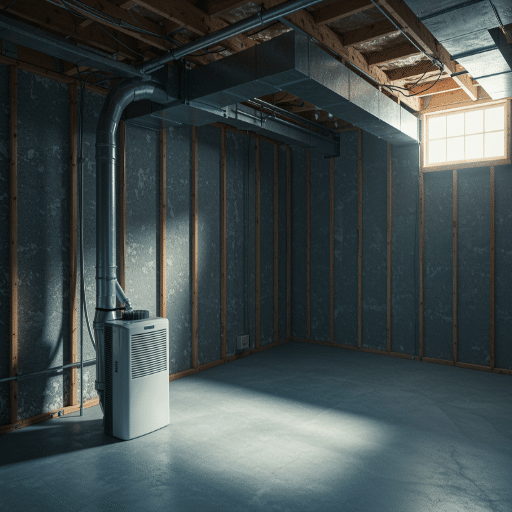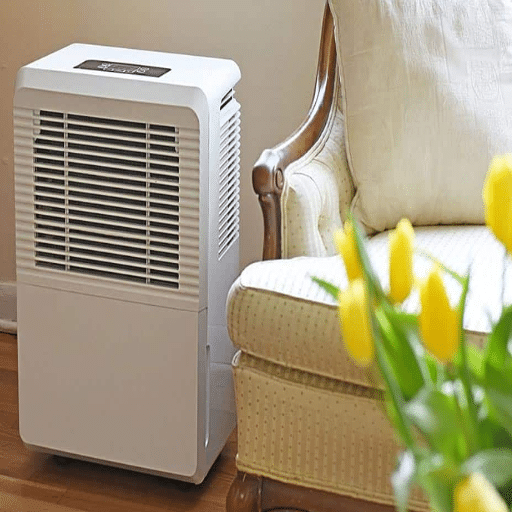Rotary desiccant dehumidifiers are highly efficient systems that control humidity by employing sophisticated desiccant materials. Such dehumidifying devices are standard in industries, commercial businesses, and other specialized areas, such as laboratories, where accurate control of moisture content is mandatory. The fundamental principle is a chemical process by which a revolving desiccant wheel captures moisture-laden air and extracts water vapor. This guide will provide a comprehensive overview of how these systems operate, the essential components, the consecutive actions involved in moisture removal, and the distinct benefits offered over conventional dehumidifiers that operate with compressors. It does not matter if you want to know these systems for your technical work or merely general purposes; the framework regarding their use operations and advantages is provided in this article.
What is a Rotary Desiccant Dehumidifier and How Does It Work?
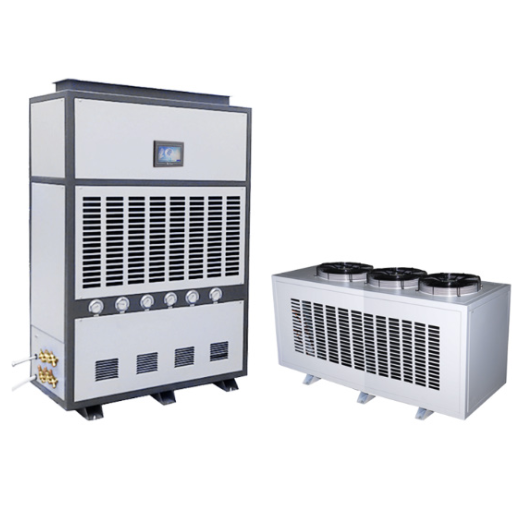
A rotary desiccant dehumidifier system passes moist air over a rotating wheel or rotor, coated with a strong desiccant material, such as silica gel. The core component of this type of dehumidifier is a rotating wheel or rotor which contains an inner core. During the operation, the moist air is sucked into the system and passed over the desiccant rotor, in which the water vapor is adsorbed. The wheel rotates continuously around two separate sections: the first section is a dehumidification zone, where the moisture is absorbed, and the second section is a regeneration zone, where hot air is used to extract the moisture that has accumulated in the dessicant. Because of its self-regeneration system, this type of dehumidifier is best for maintaining low levels of humidity in industrial or pharmaceutical settings that need precise control of the humidity.
Understanding the basics of desiccant technology
Desiccant technology is predicated on materials that can hold moisture like activated alumina and silica gel. These materials utilize adsorption: a process that allows water molecules to stick to the exterior of the desiccant. The key parameters that aid in this process include regeneration temperature, airflow rate and adsorption rate.
- Adsorption Rate: This depends on the porous structure and volume of the desiccant’s surface. Under normal operating conditions, silica gel has an adsorption rate of about 30 to 40 percent of its mass in water.
- Regeneration Temperature: A process called regeneration restores the desiccant’s capacity to hold moisture. This process usually involves subjecting the desiccant to temperatures between 100 and 200 degrees centigrade. Increased temperatures always lead to more complete removal of moisture from the desiccant within its structural limits, which are not affected.
- Air Flow Rate: Proper air flow is essential for efficient dehumidification. Adequate air flow into the rotary desiccant system is usually designed to be between 100 and 50,000 cubic meters per hour, depending on the application. For efficient system operation and energy use, parameters, including air flow rates into the system, can be changed.
Each of these factors needs to conform to the particular environment and operational conditions for the maximum efficiency and life of the desiccant dehumidification system to be achieved.
The rotary mechanism explained
The rotary mechanism employed in the construction of desiccant dehumidifying systems operates with the aid of a rotating wheel coated with a hygroscopic material such as silica gel. The wheel rotates in the two areas of process air and regeneration air.
- Process Air Zone: Over the desiccant-coated wheel, humid air is flowed, and moisture is adsorbed due to the hygroscopic character of the material. The parameters here are:
-
- Relative Humidity (RH) of Process Air: In industrial applications, it is usually recommended that it be around 60-95% so that moisture can be removed effectively.
- Temperature of Process Air: The recommended air temperature to operate the system is normally between 10°C and 40°C. This allows the desiccant to do its work efficiently while the system remains functional.
- Regeneration Air Zone: The air temperature is increased to take away the moisture that has been adsorbed and brings back the maximum capacity of the desiccant. Important parameters include:
-
- Regeneration Temperature: This is kept between 100 to 200 °Celsius, ensuring that the wheel’s moisture is removed effectively.
- Air Flow Velocities: Maintaining balanced air flow, which is generally 2-5 m/s, helps improve the energy efficiency and consistency of the regeneration.
In addition, the wheel’s rotational speed is also an important parameter, usually set between 8 and 20 revolutions per hour. This gives enough time for both adsorption and desorption to be carried out effectively in the specific zones. Therefore, these parameters aim to enhance the efficiency and durability of the rotary mechanism under constant specific circumstances and functional requirements.
Multiple Comparisons Of Desiccant And Desiccant Suspensions For His Dissertation
The differences in the principles of operation, the scope of their efficiency, and the application areas are vast when comparing desiccant dehumidifiers to compressor-based models. Compared with other models, models using desiccants can operate better in particular conditions. Such conditions are ones where temperature and humidity levels are low and hygroscopic materials are present. These units work best at temperatures below 15 and above such temperatures, the compressor models begin to lose their operational efficiency. The reverse is valid for compressor dehumidifiers as well. For high warm temperatures and compression humidity climates above 15, these models perform the most efficient. In summary, the output is driven by the environment’s moisture content and the unit’s age.
One important and very distinct feature is the level of energy consumed. Desiccants consume more energy than other models when the unit is on air regeneration, as high temperatures of 100 to 200 degrees Celsius are needed. Air is cooled in these units, and therefore, in moderate to high-temperature environments, energy is required for the compressor models to operate.
Apart from that, the levels of noise emitted from a unit vary from model to model. Compared to other models, desiccants operate on relatively lower noise levels, as there is no compressor. This makes them ideal for private and sensitive areas. However, this particular benefit comes at the expense of energy wasted.
In terms of moisture removal rates, a unit with a compressor shows higher extraction capacities in warm and humid conditions because it can operate on a more volumetric extraction basis compared to desiccant models, which perform uniformly across wider ranges of temperature but will tend to lag in moisture extraction as temperature and humidity increase.
Ultimately, the choice between the two boils down to what the customer has identified as the relevant environmental parameters, energy efficiency, and operational conditions for the system application.
What Are the Key Benefits of Using a Rotary Desiccant Dehumidifier?
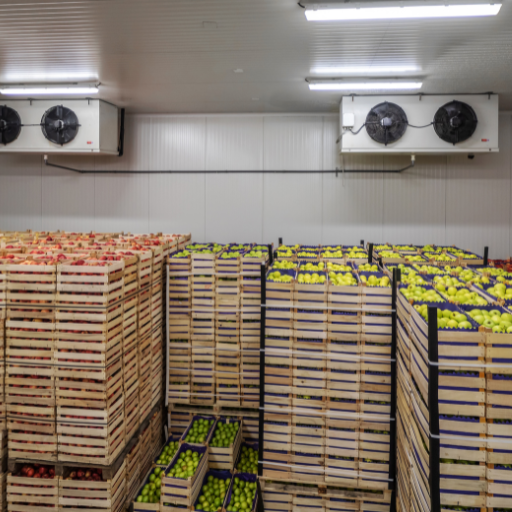
Desiccant rotary dehumidifiers have some key advantages. They perform well even under extreme outside conditions, such as high temperature and low humidity. Because of this, they possess some benefits, such as reaching low dew points. These types of systems are perfect for industrial usage, such as in pharmaceuticals or electronics. Also, not having refrigerants eliminates the need for compressors, which are noisy, and makes the unit more environmentally friendly. Moreover, the unit is also more compact and lightweight than conventional systems, which makes the installation and mobility much more manageable.
How Moisture Removal Works In Low Temperatures
At low temperatures, rotary desiccant dehumidifiers use materials such as lithium chloride or silica gel to remove moisture from the air. Such materials are hygroscopic, helping these machines maintain high efficiency unlike standard compressor-based systems that depend on condensation to function. These systems can operate in temperatures lower than freezing, having a much wider range. Key technical parameters showcasing this efficiency include achieving dew points as low as -40°F (-40°C) and high-performance levels at relative humidity lower than thirty percent. Due to these factors, they are commonly deployed in industrial drying processes or cold storage facilities where maintaining precise moisture is vital. Energy efficient heat recovery systems also promote effective desiccant regeneration while keeping the operational performance at desired levels.
Construction design and operational effects
More focus is placed on the design of rotary dehumidifiers and the centrifugal blower dehumidifiers. Some recent developments, such as rotary desiccant dehumidifiers, have decreased operating noise as one of the areas of focus. In addition, the machine’s operating noise is diminished because no compressor is present. With the evolution of modern business or technology, the focus on low-noise workplaces and sensitive areas like laboratories and offices has increased. These devices are ideal for such environments. In addition, the machine’s streamlined design and reduced vibration endorse their application in sound emissions-sensitive environments.
Performance capabilities
Like other machines, rotary desiccant dehumidifiers will inevitably undergo wear and tear during their use. Hence, particular care has to be taken in selecting and implementing best practices. For rotary desiccant dehumidifiers to have the highest performance, they must be designed to minimize energy consumption during day-to-day operations. Their design enables dehumidifiers to utilize energy more efficiently while eliminating moisture from air. Their integrated heat recovery systems allow waste heat recycling, lowering energy requirements during regeneration. Moreover, in contrast to other traditional compressor-based dehumidification systems, rotary units do not use refrigerants, eliminating the risk of greenhouse gas emissions. All these improvements, combined with modern materials and technologies, guarantee better efficiency in the operation of devices, which reduces the carbon footprint and promotes sustainable development in both industrial and domestic use.
How to Choose the Right Rotary Desiccant Dehumidifier for Your Home?
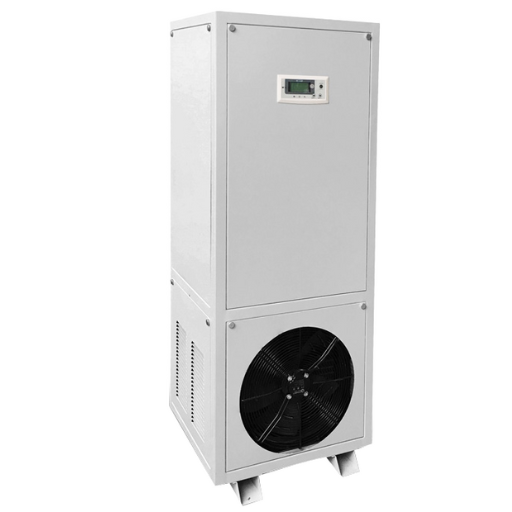
Consider the application range and room size when purchasing a rotary desiccant dehumidifier. The average room humidity will also be measured alongside the device’s operating conditions. Check the airflow units of the dehumidifier, usually in CFM, to confirm that sufficient air will be moved around your house. From a cost-saving standpoint, energy usage is another important aspect; always seek designs fitted with more advanced heat recovery systems, resulting in lower running costs. On the other hand, the quietness of the appliance is also essential especially when the dehumidifier will be placed in the living room. Finally, look for features that promote joy with the appliance, such as adjustable humidity, easy maintenance, and easy-to-use control elements for greater comfort during use.
Assessing the suitable pint capacity for your place
To pint capacity for your space, I take into account average square footage and the level of humidity. For moderately damp spaces, I work with a 10 pints for 500 square foot area guideline, adding four pints for every additional 500 square feet of space. For damp environments, I increase the capacity by 6-10 pints to ensure that moisture is adequately controlled. I also consider specific factors lik the number of people in the household and water usage that may increase the required capacity for proper humidity control.
Room size and humidity levels measures that need to be takens into consideration
In evaluating room size and humidity parameters, I first measure square footage of the space and ascertain soil moisture characteristics. For smaller to medium-sized humid rooms, I almost always choose a dehumidifier rated for about 30-50 pints. In areas such as basements or other relatively large spaces that are highly moist, I prescribe pints of more than 50-70. Things like climate and ventilation, as well as specific activities in that space alter the required capacity to ameliorate dehumidification efficiency.
The ability to track the drain hose, water tank size, and the ease of movement of the dehumidifier are important features that should be kept in mind. Let’s review them one after the other:
- Drain hose compatibility
When finding a dehumidifier, one with a drain hose is quite useful when the water needs to be drained continuously. This feature is particularly helpful for places with high humidity or hard-to-reach places like basements, where manually draining water can be a hassle. Make sure to check if the drain hose connection is secured and fits the appropriate size so that there is no hassle.
- Water tank capacity
The larger the water tank, the less frequent maintenance it requires. Typically, water tanks ranging from 0.8 to 1.5 gallons require hefty upkeep, while tanks that can hold over 2 gallons can manage humidity levels and situations with less user help. Look for tanks with clear water-level indicators or a full-tank alert system to maintain high efficiency.
- Portability
By improving the dehumidifier’s portability, users can now more conveniently transport it from room to room or to areas for storage. It is effortless to find models with lightweight designs, built-in carrying handles, and caster wheels to allow smooth movement. This feature is essential for controlling humidity in different spaces or temporary setups.
Are Rotary Desiccant Dehumidifiers Suitable for Basements and RVs?
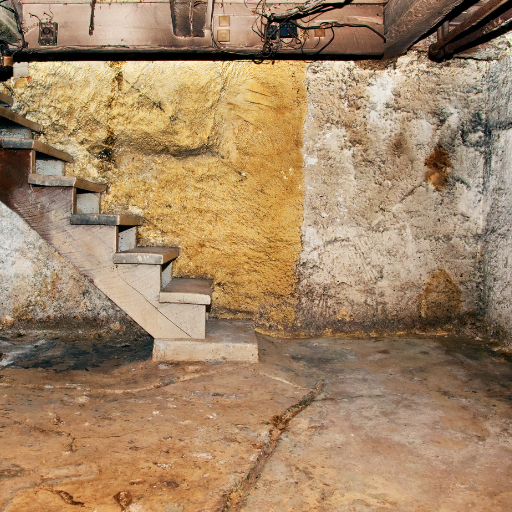
Rotary desiccant dehumidifiers are suitable for basements and RV’s because of their effectiveness in low temperatures and smaller designs. Unlike dehumidifiers that use refrigerant, rotary desiccant models can actually work in cold places such as basements that do not have adequate heating. The devices’ compact and lightweight nature allows them to be easily moved and installed in cramped spaces such as RVs. Moreover, these units are also more effective in residential or mobile settings requiring quieter environments because they use no compressors, which reduces the overall noise.
Efficiency in humid cold locations
Due to the technology utilized, rotary desiccant dehumidifiers have an advantage over others in chilly and moist locations. Whereas refrigerant dehumidifiers utilize condensation and are inefficient at cold temperatures, rotary desiccant models use desiccants to suck moisture out of the air. This action is not reliant on temperature gradients, so it can be done even at when temperatures are low as 1°C (33°F). Many units advertise moisture removal ranges between 10 to 80 pints per day based on model parameters, as well as humidity of the environment. These units are additionally constructed to function below 50% relative humidity while preventing mold, mildew, and condensation in cold, damp places. Without relying on the functionality of a compressor, their fan powered air flow provides consistent moisture absorption throughout the space, increasing operational reliability while reducing noise.
Efficient designs for ultra-small spaces
Rotary desiccant dehumidifiers are designed to provide the utmost moisture control while occupying a tiny space. Many of the units are space-efficient, which permits the use of these devices in basements and storage areas or for even more mobility in RVs and boats. Their design facilitates maximum moisture collection while minimizing space usage, which makes them very efficient. These systems typically include built-in handles or caster wheels for easy mobility, while still providing high-end features like programmed and auto-restart modes for improved usage in congested spaces.
Efforts in fine-tuning high moisture issues in basements or even recreational vehicles
Basements, as well as RVs, are often afflicted with high humidity, which is a cause of mold growth, smell, and material decay. One of the most efficient remedies is the installation of specialized dehumidifiers which use desiccant technology to work remarkably well in cold temperatures. In addition, air circulation through proper ventilation is essential to minimize the amount of moisture that gets trapped in. Moisture entry points such as gaps and cracks should also be sealed to reduce moisture content. These methods combined create a controlled setting that helps prevent humidity issues and damage to structural and personal belongings.
What Maintenance is Required for Rotary Desiccant Dehumidifiers?
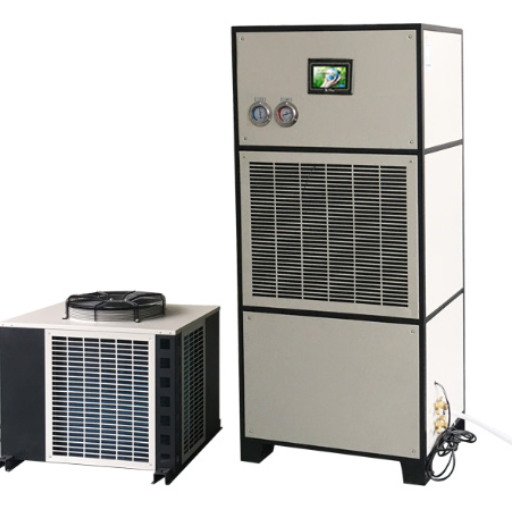
Always keeping rotary desiccant dehumidifiers in perfect working order goes a long way toward extending their lifespan. Regular maintenance includes, but is not limited to, cleaning or replacing air intake filters so that dust does not block airflow. There is a need for regular inspection of the desiccant wheel so that any residue which affects working of the system is removed. In order to maintain airtight working, all seals and gaskets should be checked for wear and replaced if needed. Monitor and maintain all electrical parts, bearings and fans. Routine servicing and texts recommend implementation has to be adhered to to reduce the potential of operational issues.
Dismantling and changing the desiccant material
To retain the optimal efficiency of rotary desiccant dehumidifiers, it is vital to dismantle, clean, and change the desiccant material regularly. During the cleaning process of the desiccant wheel, it is essential to thoroughly take apart the wheel and check for any traces of dirt, dust, or chemical residue. Gentle cleaning methods such as compressed air and soft brushes are the prime recommendation for the wheels as they do not damage the delicate surface. A cleaning solvent can be used, but only if the desiccant and its properties agree with its application.
Desiccant wheels wearing out, showing signs of damage or reduced performance are some situations which call for a replacement. However, to maintain the system’s effectiveness, the new wheel must match all the original technical parameters- size, material composition, moisture adsorption capacity,’ porosity, etc. With proper maintenance, many industrial-grade rotary desiccant wheels can have a lifespan of multiple years. This is very dependent on operating temperature and humidity levels. To achieve the best operational efficiency, compliance to the cleaning and replacement recommendations by the manufacturer needs to be met.
Taking care of the wheels to enhance performance as well as life expectancy
A maintenance schedule for the desiccant wheels should be observed to enhance performance and life expectancy. Inspection routines should be performed systematically to assess contamination, physical damage, or functional impairment and wear. Recommended practices, such as careful low pressure washing, removal of debris around the blades, and using cloths or cleaning solutions that do not damage the structure, should be followed. Also, keeping the temperature and humidity of the working environment under control is critical to guard against rapid deterioration. Adequate preservation when the system is offline, such as placing blinds over the sealed system to block moisture penetration, increases the operational life of the wheel. Following instructions provided by the manufacturers take care of the efficiency of the system and the chances of replacement problems.
How Do Rotary Desiccant Dehumidifiers Compare to Other Dehumidification Methods?
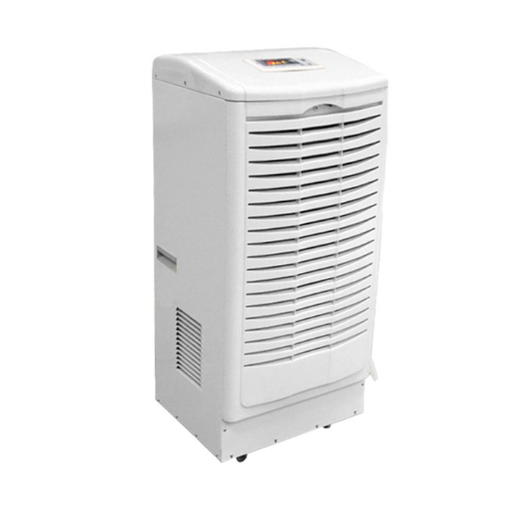
In settings characterized with low temperatures or excessively high humidity, rotary desiccant dehumidifiers work the best as they are perfect for these conditions. In contrast with traditional refrigerant systems, rotary units operate through adsorption, utilizing a desiccant material to extract moisture from the air. These units can perform efficiently regardless of the surrounding conditions. Furthermore, these units can achieve lower dew points and increased moisture removal, making them ideal for industrial, pharmaceutical, and even food processing applications. However, with all the advantages comes a disadvantage. They require an extensive amount of energy during use, which leads to increased costs, making them unsuitable for residential problems. Thus, the best use is for scenarios requiring precise humidity or extreme conditions.
Comparison Between Rotary Desiccants and Compressor-based Dehumidifiers
There are substantial differences concerning the operational order, performance metrics, and the actual environment where rotary dehumidifiers and conventional compressor-based dehumidifiers will be put to use. A Rotary desiccant dehumidifier operates through adsorption using a wheel that captures the moisture within the air. Such units are suitable for low temperature and low humidity conditions, where dew points of -40F can be achieved. Such systems are suited for industrial applications requiring high moisture control precision. Such systems are, however, expensive in terms of energy. This can largely be attributed to the regeneration stage where the heat is required to change into vapor.
Traditional compressor dehumidifiers function by using refrigeration cycles. The moisture present in the air passes through a cooled coil, which subsequently causes condensation, thereby removing moisture from the air which results in the dehumidification process. These units are cost-effective and energy-saving for moderate indoor conditions around a temperature level of 41F to 95F, while the relative humidity exceeds 50%. However, their performance decreases significantly in cold environments as the cooling coil shall not condense moisture while the ambient temperature is low.
In short, desiccant rotary dehumidifiers are appropriate for precision applications in extreme environments, while traditional compressor units are appropriate for broad use in regulated-temperature spaces. The selection is made based on the system’s operational needs, such as intended humidity, temperature, and energy usage.
Comparison of Effectiveness with Moisture Absorbers and Silica Gel Packets
Moisture absorbers and Silica gel packets are some of the most popular systems for the control of humidity, with each of them having their unique physical properties and applications. Moisture absorbers can be defined as compounds like Calcium Chloride which are very efficient in pulling moisture from the air within large enclosed spaces. They are classified as hygroscopic substances that attract and hold water to themselves which in return helps lower relative humidity to great extents. These compounds are, however, a bit sluggish in their action and indeed impractical compared to the Silica gel.
Silica gel packets are popular in food packaging and electronics and contain silicon dioxide. The basis on which they function is adsorption. During adsorption, moisture sticks to the outer layer of silica particles without undergoing a chemical reaction. One of the major benefits of silica gel is its capacity to reduce humidity levels by 40% during controlled conditions. It can also be dried, which allows the user to reactivate it. Although the overall absorption capacity may be less than larger scale moisture absorbers during prolonged use, silica gel is extremely easy to use and versatile.
Reference sources
Frequently Asked Questions (FAQs)
Q: What is a rotary dehumidifier and how does it work?
A: A rotary dehumidifier, also known as a desiccant dehumidifier, uses innovative rotary desiccant technology that’s both freon-free and compressor-free. It works by passing moist air through a rotating wheel containing desiccant material, which absorbs moisture. The wheel then rotates into a regeneration sector where hot air removes the collected moisture, which is then expelled from the unit.
Q: Are dehumidifiers for basement different from those used in other areas of the home?
A: While dehumidifiers for basement use are similar to those used in other areas, they often have higher capacity and durability to handle the typically damper conditions found in basements. Many basement dehumidifiers are designed to cover larger sq.ft areas and may include features like drain hoses for continuous operation.
Q: What should I know before buying a dehumidifier for my RV?
A: When buying a dehumidifier for an RV, consider factors such as size, power consumption, and noise level. Look for compact, portable dehumidifiers that can handle small spaces efficiently. Some RV-friendly options include mini dehumidifiers or small, rechargeable units that don’t require constant power.
Q: How do I choose the right pint dehumidifier for my space?
A: To choose the right pint dehumidifier, consider the size of your space in sq.ft and the level of humidity. For example, a 30-pint dehumidifier might be suitable for a small room, while a 50-pint dehumidifier could handle a larger area or damper conditions. Always check the manufacturer’s recommendations for coverage area.
Q: What features should I look for in a dehumidifier for bedroom with drain?
A: When selecting a dehumidifier for bedroom with drain, look for features like a quiet operation mode or sleep mode to minimize noise disturbance. Ensure it has a continuous drain option or comes with a drain hose for convenience. Other useful features might include a humidistat, auto shut-off, and easy-to-use controls.
Q: How does a portable dehumidifier compare to a whole-home dehumidifier?
A: Portable dehumidifiers are designed for single rooms or small areas and can be moved as needed. They’re typically less expensive and easier to install than whole-home dehumidifiers. Whole-home systems, often integrated with HVAC systems, can dehumidify larger areas more efficiently but require professional installation and are more expensive.
Q: What are the benefits of using a smart dehumidifier for basement?
A: A smart dehumidifier for basement offers several advantages, including remote monitoring and control via smartphone apps, integration with home automation systems, and more precise humidity control. Some models can provide alerts for filter changes or tank emptying, and may offer energy-saving features by adjusting operation based on real-time conditions.
Q: How do I maintain my home dehumidifier to ensure optimal performance?
A: To maintain your home dehumidifier, regularly clean or replace the air filter, empty and clean the water tank (if not using a continuous drain), and wipe down the exterior and air vents. Check the coils for frost or ice buildup in cooler conditions. For optimal performance, ensure proper airflow around the unit and keep it away from walls or furniture.
Q: What size dehumidifier do I need for a bathroom?
A: For a bathroom, a small dehumidifier or mini dehumidifier is usually sufficient. Look for units designed to handle 150-200 sq.ft areas. Dehumidifiers for bathroom use should be able to remove 10-20 oz of moisture per day. Consider models with auto shut-off features and quiet operation for this smaller space.
Q: How do commercial dehumidifiers differ from residential models?
A: Commercial dehumidifiers are typically larger, more powerful, and designed for continuous operation in larger spaces. They often have higher moisture removal capacities, measured in pints per day, and may use different technologies like refrigerant or desiccant systems. Commercial units are built for durability and may have features like low-temperature operation and more robust drainage options.

